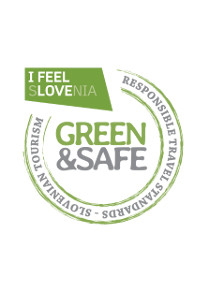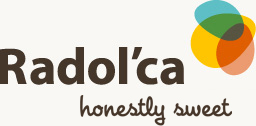The town of Radovljica
Gorenjska is the Alpine region in the upper part of the Sava river basin, surrounded by the Karavanke mountains, Kamnik-Savinja Alps and the eastern part of the Julian Alps. The core of Gorenjska is the 300-500 meters high Ljubljanska kotlina (Ljubljana basin), which slowly rises from Ljubljana to Bled and Žirovnica along the mountains of the Julian Alps, Karavanke mountain range and Kamnik Alps. The entire region is among the most developed parts of Slovenia, with diversified industries, handicrafts and summer as well as winter tourism. The countryside has a lot to offer, as well.
The geographic centre of the upper part of Gorenjska is the town Radovljica. It is situated at the confluence of the two rivers Sava Bohinjka and Sava Dolinka. This part of Slovenia is the last plane of the Ljubljana basin, which is called Dolina (the Land). In the Northern part of the Land two main valleys open up. The first is the valley of Sava Bohinjka, which ends in Bohinjska kotlina (Bohinj basin), the other, named Zgornja Savska kotlina (Upper Sava valley) continues to the northwest and to Italy.
Radovljica developed on the narrow pier of the Sava terrace. This part was inhabited already in the Bronze and Roman age and during the migration of peoples. This is proven by numerous archaeological finds. The old part of the town started to receive its current image in the 14th century. Urban settlement was created by Ortenburg counts. In 1333 Radovljica was first mentioned as a market. Due to its location, it quickly developed ironwork in many places of the valley. Radovljica got the city rights in the second half of the 15th century. Then the city was under administration of the Habsburgs. In the 16th century a wave of Protestantism came over the city, then a major earthquake, and a peasant uprising. In 1840 the town became the seat of the Radovljica district. With new administrative offices and urban villas Radovljica began to expand towards Lesce in the early 20th century.
Some sights
Linhart's marketwas created in the 14th century in the shape of a rectangle. On both sides are urban houses from the 16th and 17th century. The most important building is Thurn’s mansion which was already built in the 14th century by Ortenburgs. The front is adorned with plaster from the 18th century and in the interior is the hall with the representative staircase. The mansion is known for its concerts, it has a great acoustic hall. On the first floor the famous bee-keeping museum is located representing the rich tradition of Slovenian apiculture which has been an important agricultural industry in the previous century.
It has a permanent collection on the Slovenian native bees, called kranjska sivka (apis mellifera carnica). The exhibition also shows hive extensions, which are valuable examples of Slovenian folk art. On Linhart’s market you can also visit a famous urban house from the mid 16th century with a rich exterior and interior of late Gothic architecture. One of the rooms is now used as a wedding hall.
More overall and tourist information about Radovljica can be found on the website of Tourism Radovljica.
Thematic trails and paths for excursions in the Radovljica district are also well-described on their website.
Lesce
Lesce is a town in the middle of the Radovljica basin and is known as industrial and tourist destination. A part of the village is known for industries of equipment and chocolate. A part of the village at the lower part of the river Sava is intended for tourism.
According to references in old records Lesce is one of the oldest settlements in the Gorenjska region. It is first mentioned in the years, when it became property of the bishops of Brixen together with Bled and Bohinj. In the old part of the town the church of the Assumption of Mary is situated. This church was built in the 14th century, and was a three-nave Gothic church which in the 17th century was reconfigured into Baroque. It is known primarily by its facade and frescoes from the time of its creation, and also by the famous Baroque altar, pulpit and the frescoes in the presbytery, which were painted by painter Jelovšek between 1730 and 1739.
Begunje na Gorenjskem
Begunje is located below the Karavanke mountains at the river Begunjščica in the municipality of Radovljica. This place is a typical village of the Gorenjska region, and hides five natural beauties, historical monuments and places worth a visit for the next trip. Due to its location Begunje used to be a climatic resort.
Again, the history writes a wide variety of stories of people who lived in these places and presenting more monuments with a rich history of architecture. Worth seeing is the castle, named Kamen, which is due to the important strategic location situated on a stone shelf and by a deep defensive trench separated from the rest of the stone pier. The castle was first mentioned in 1263. The owners of the Kamen castle were originally Ortenburgs and later Lambergs, among which the most honoured is Gašper Lamberg, escort of emperor Maximillian and winner of 87 knight’s tournaments in the second half of the 15th century. The owners abandoned the castle in the 18th century. Because of its size and large funds, it is almost impossible to completely restore the castle. Nowadays, especially in spring and summer months it is a space for various cultural events, weddings and knights archery tournaments.
There are still quite a few sights, as the Kacenstain castle, known also as Begunjska graščina (Begunje mansion), which together with the church of St. Urh forms the core of the old village center. Once the mansion was a women’s prison and in the 2nd world war the Germans used it as military prison. Today it is a psychiatric hospital and a part of it a museum of war hostages.
The surroundings offer beautiful footpaths, viewpoints, above all in the Draga valley, which is a unique natural environment, full of beautiful botanical curiosities and waterfalls in the Luknja gorge. In the valley is the starting point to go to Dobrča, Roblek's home, highland Preval, highland Planinca and Poljška highland.
In Begunje there are the headquarter of the world brand Elan. In recent decades, the factory, mainly thanks to the many unique inventions, developed into one of the leading manufacturers of skis in the world.
With Elan products domestic and foreign competitors won world championship and got Olympic medals. Among them are Bojan Križaj, Andreas Goldberger, Dieter Thoma and Ingemar Stenmark with 86 wins in the World Cup.
And last but not least, there is certainly not a man who has not heard of the famous band of brothers Avsenik and their well-known song "Na Golici", the Avsenik's museum and their restaurant »Pri Joževcu«. Sure enough, Begunje is a mecca for fans of folk music.







